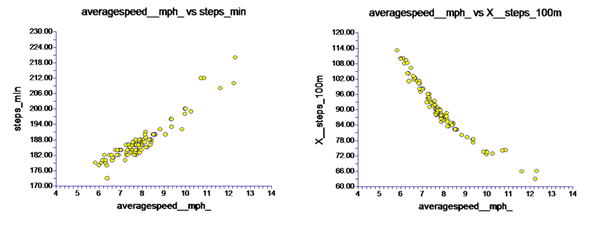Running 101 – Basic Running Types Part 1: Strides
To become a faster runner, there’s really only two things you have to account for: the length of your stride and your turnover, or “stride rate”. Speed comes naturally when you combine these two factors, but the difficult part is finding the perfect combination of the two that’s economical.
Stride length varies on an individual basis and there is such a thing as overstriding, which is when you start to reach too far ahead with your lower leg and strike your heel. This, in turn, ends up reducing your turnover because it takes time for the rest of your body to catch up on the push off.
Many runners suggest that increasing turnover is an easy solution to overstriding. That makes sense. Your foot lands closer to your body when you strike mid-foot and there’s less distance to travel on the push off. Although, keep in mind that solely increasing one or the other doesn’t necessarily mean that you’re increasing speed… it’s a bit more technical than that. Steve Magness wrote about stride rates in greater detail on his entry “180 isn’t a magic number.” Essentially, he found that athletes generally adjust both stride length and rate to either maintain or increase their speed.
The above image comes from Pete Larson – it charts cadence & speed compared to actual steps taken per 100m. Larson wrote about his personal findings concerning the correlation between stride length, cadence, and speed. His was a unique circumstance in that he not only increased his speed by upping his stride rate, but he also extended his stride length by 42% when he picked up his pace. Now it’s important to note that increasing stride length by that much isn’t something that most runners can do without compromising form or risking injury.
Strides help runners structure their speed training, but it also places some emphasis on improving form. Good form can improve your overall running economy. Some quick notes on doing strides:
- strides are often short between 50m-100m
- they’re not full-on sprints, but are “comfortably fast” runs that retain good form
- you can do strides as warm-up, cool-down, or as intervals
- not sure what a stride looks like? here’s a helpful video on Track & Field Strides – same idea 🙂
For some additional info, check out this Lab Report from the Running Times and a blog entry on counting strides from RunUphill Racing.



What kind of cadence should I aim for? Or does it only matter when I sprint?
Loving these articles. Each one is a gem and just the kind of info I want to learn more about.
Miss hanging out with you guys in steamy Brooklyn beer gardens. How’s Chile?
The “average” for elite runners is between 180 and 190, but we’re talking race pace. It’s best to keep it relative to your current stride rate. To figure that out: count the # of times one foot hits the ground over a minute. Multiply that # times 2 and that’s your stride rate. Then you just bump up your stride rate by learning to take quicker steps (or, more importantly, lighter steps). That’s where doing strides come in – it teaches you to lift your legs faster, producing a quicker turnover. Run a few short 20-30 meter strides a few times a week, as part of a warm up or cool down and it’ll make a pretty big difference over consistent training.
Hope you’re doing well back home! Definitely miss good times at Brooklyn’s beer gardens 🙂 Haven’t had much chance to explore Chile – just too busy working most days, nights, and weekends – but there’s progress. How’s Road Bud doing? Partnering up with other platforms yet? 😉
Been working hard on Roadbud (mainly internal features, like GPS accuracy), but spring is coming and a boy’s heart starts turning toward social platforms :).
Thanks for the tips on running cadence. I’m a lot more familiar with biking, where 95-100 (equivalent of 190-200 steps/min) is often recommended. I guess efficient legs are the same, no matter the sport.
When do you return to America?
Are you doing the development work yourself or outsourcing the tweaks? Don’t know about you… but you might really benefit from Smashrun integration 😉 Just saying. And it’s not like we haven’t had beers together already. Haha
Should be stateside sometime in the summer, but only for a short time. Send me an email via jacklyn at smashrun dot com.